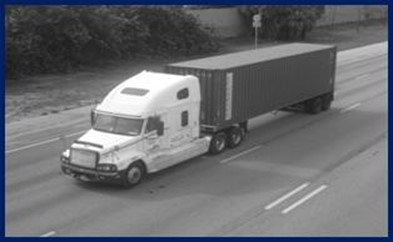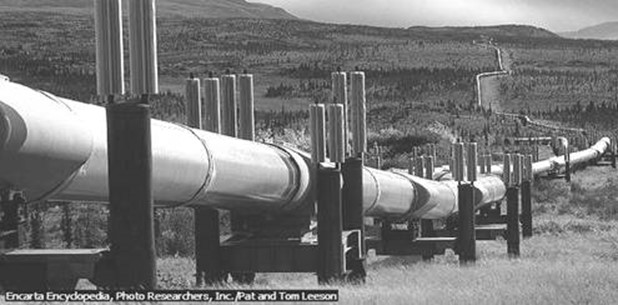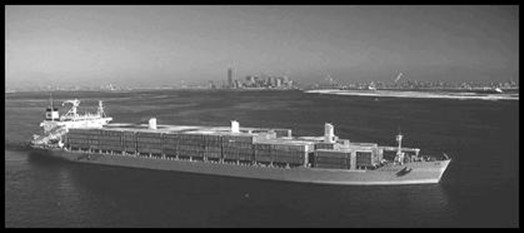A. TRANSPORTATION
means the process whereby the passengers and goods are moved from one place to another place.
Transport is one of the aids to which assets in moving or goods from the place where they are produced to where they are consumed.
Is actual movement of passengers and goods physically from one place to another? Units of carriage such as trains, lorries, tankers, ships an aero planes are needed for caring passengers and goods.
FORM OF TRANSPORT
There are three main forms of transport i.e. Land, water, and air.
Water transport may be sea, canal , lakes and livers
Land transport may be rail, road , pipeline
Railway , road , pipeline , canal are man made where as water i.e. sea ,lakes ,oceans are natural ways
ELEMENTS OF TRANSPORTATION / FACTORS FOR EFFECTIVENESS OF TRANSPORTATION
Are those things which make transport to be smooth.
These factors are as follows
The way.
Goods must be move on something, on water , on land , or in air. This can be natural like sea , the air, or lakes or man-made like roads, railway tracks or bridge.
Unit of carriage.
Goods do not move themselves. They must be carried in some vehicle, may it be a truck , a lorry , a train, a ship or an aero plane.
Method of propulsion
A unit of carriage must be driven by some force or power. Common methods of propulsion are petrol engine, jet engine, and electric motor. To choice depends on the size of the vehicle, speed desired and the fuel available.
Terminal
Goods must be loaded and off-loaded somewhere. These places of one unit of carriage is the starting point of another vehicle example railway station, bus stands, airport , and harbors, this are very important factor to be in mind when deciding the means of transport.
TYPES /FORM OF TRANSPORT
There are three main forms of transport , These include ;
A. Land transport – This type of transport consist the following form
I. Road transport
II. Railways transport
III. Pipeline transport
B. Water transport
C. Air transport
D. Containerization
3. ROAD TRANSPORT
This involves the movement of goods and passengers by vehicle on road e.g. lories, business trucks ,pick-ups and tankers are the main units of carriage in road transport.

1
Fig 2. Transportation of goods from one area to another
ADVANTAGES OF ROAD TRANSPORT
Flexibility
Road transport route are connected to nearly all the consumer where motor vehicle cannot reach motor bicycle and pick –ups are used.
-Speed
When considering short distance road transport in relatively fast, the loading and off loading can be effected any where unlike railway and sea transport where this is line under special designated station.
Cost
The transport cost passengers and cargo is relatively cheaper comparing with air transport.
-Convenience
The are no fixed time table in road transport thus making it convenient to travel at ay time you need it affords the transport of any size of load at any time it also allows passengers and goods to board, load ,disembark ,and off loaded at any price.
-Low construction and maintenance cost
Initial and operating cost is relatively low compared to other modes of transport.
DISADVANTAGES OF ROAD TRANSPORT
I. Road transport can handle limited quantities of bulk and heavy materials like coal, timber , iron , cement etc.
II. Road transport is expensive in congested areas e.g. urban centre and industrial areas.
III. Weather conditions tend to disrupt road transport more easily than air.
IV. Compared to air transport road transport is slow to cover up expected distance.
V. Is too risky especially for delicate goods this can cause breakage or destruction goods like computers and glass materials causing a great loss.
VI. Transport facilities contribute air and water pollution in the world.
VII. Construction of roads ennglish-swahili/courage” target=”_blank”>courage land degradation.
.
1. RAILWAY TRANSPORT
Involving the carrying of goods and passengers by train. railway transport is the means of transport which transport bulky goods.
ADVANTAGES OF RAILWAY TRANSPORT
 It is convenience to the businessmen in industries linked to railway tracks.
It is convenience to the businessmen in industries linked to railway tracks.
 It is less effected by whether than the other form of transport.
It is less effected by whether than the other form of transport.
 Route are more direct and there is a specific timetable of railway services.
Route are more direct and there is a specific timetable of railway services.
 It is suitable and quite cheap for carriage of bulky goods over long distance.
It is suitable and quite cheap for carriage of bulky goods over long distance.
 Rail services can be provided to greater number of person and more load can be carried as compared to road or air transport.
Rail services can be provided to greater number of person and more load can be carried as compared to road or air transport.
 Passenger trains charge relatively cheap compared to other forms of transport especially air transport.
Passenger trains charge relatively cheap compared to other forms of transport especially air transport.
DISADVANTAGES OF RAILWAY TRANSPORT
I. Railway transport is not flexible because routes are fixed.
II. Its speed its low over short distances i.e. it is a slow form of transport compared to road transport.
III. Its expensive for short runs and small cargoes.
IV. Initial cost of setting are quite higher i.e. its expensive to constructs railway lines.
V. It has fixed schedule i.e. trains are time tables so users are limited by these schedules.
2. WATER TRANSPORT
Is the type of transport where by goods are transported by using water i.e. on seas, canals, lakes and rives
Advantages of water transport
Little time is wasted in traffic control.
The way is natural. i.e. don’t need construction or maintenance expenses/expenditure.
It is cheapest for bulk and low quality goods.
-Breakable goods like glass can be carried without the danger of damage in the absence of shaking and jolting on inland water ways.
-Where the port of dispatch and delivery are in the waterside, there are no added costs of collection and delivery .
-The water transport is relative free from weather conditions compared to road and air transport.
-Special ships like oil tankers may be constructed to carry special type of goods . this is a great advantages that sea transport has over other forms of transport used for long distance
Disadvantages of water transport
Maintenance charges of canal are high
Providing facilities at ports may be very expensive. not every country is blessed with natural habours
Perishable or urgent required goods cannot be transported by canal since their speed is low.
canals serve a limited area where water exist. The same applied for sea, lake and river transport
Canal an d river suffer from drought in dry seasons and are liable to be frozen in very cold seasons
-Port congestion may lead to delay in delivery . this is particularly true to east Africa ports which don’t have enough facilities to handle the great volume of cargo off loaded everyday
VESSELS INVOLVED IN WATER TRANSPORT
a) Cargo ship
These carry bulk freight such as coffee, , cotton , sisal, food- stuff, machinery and a few passengers. They operate on the fixed routes. Also They carry particular class of cargo of every route on which they sail.
b) Lash ship /tramp steamers
These do not have set routes but operate like taxis going wherever they can get cargo. These tramp steamers are owned by individual, companies and partnership and carry low grade goods sent in bulk such as coal and another minerals and raw materials
These are ship which do not follow a regular route or timetable but are available at the demand of the customer therefore speedy than liners. They resemble to the taxes in road transport. They are best for those customer in need of maximum speed/urgency.
c) Passenger liners /liner
These are ships which carry people, tourist , and small cargo of travelers/ passengers. They sail on fixed routes at regular intervals.
d) Tankers /oil tanks
These are owned by oils companies and tank owners and carry oil, oil product and other liquids.
DOCUMENTS USED IN WATER TRANSPORT
I. charter party
a) This is an agreement between the person owning the ship and the person hiring entire ship or a number of voyage. Is the agreement between ship owner and the person who want his goods to be carried in the ship for the charge.
A charter party constitute an agreement between the shipper and the chartering businessman and gives the businessman who hires absolute control over the vessel for the period of contract.
Contents of charter party
-Place where the ship will go.
The type of goods to be carried in the ship hired.
The amount /charge to be paid by one who hire the ship.
-Time of loading the goods and time of unloading the goods.
-Right of the ship owner to hold goods because of failure to pay the bill.
b) Bill of lading
A bill of lading is issued by the ship owner to the exporter a copy is sent to the importer and copy is retained by the ship owner. Its saves the following duties
a) It is official receipt for the goods shipped in one of the owner’s vessels
b) It is agreement between the exporter and ship owner to carry cargo up to destination.
3. AIR TRANSPORT
– air transport this is movement of goods and passengers by the aero plane.
ADVANTAGES OF AIR TRANSPORT
It provides regular, convenience ,efficiency and quick services.
There is greater security and protection in transit since there is a shorter traveling time
Air transport is particular suitable for the carrying of items here speed is essential e.g. drugs for saving life, mails , perishable and fashion goods.
Its suitable for transport valuable items like gold copper, glass etc. .
Air transport helps in transporting goods to areas un accessible by any other means of transport.
DISADVANTAGES OF AIR TRANSPORT
i. The cost of operation of the air transport is higher as compared to ocean ,road or rail transport
ii. Can be affected by bad weather conditions e.g. heavy storms etc.
iii. Dangerous articles like those which can be easily catch fire and alike are not accepted on planes. E.g. fuel
iv. Air crafts have limited carrying capacity compared to railway and water transport
v. It is not flexible i.e. airport are allocated outside city centers
DOCUMENTS USED IN AIR TRANSPORT
I. Airway bill, this documenty issued by an airline company to act as a contract between the airline company and the sender of the goods. Twelve copies are issued but of those three are originals, one copy is given to the carrier of the goods, second to consignee and the third to the sender of the goods. However, the remaining copies are retained by the air line company for the administrative purposes.
4. PIPELINE TRANSPORT
These are type of pipes constructed to carry liquid materials such as oil. For example of these pipeline is the TAZAMA pipeline which is jointly owned by TANZANIA and ZAMBIA carries oil from Dar es salaam to Ndola in zambia.
Pipeline can be constructed under or on the earth surface.
Some time pipeline include small pipes inside which transport more than one kind of liquid goods e.g. one pipe can be used to transport petroleum , another kerosene, and another diesel and so on
Example shown below is one type of pipeline which constructed on the earth surface.

Advantages of pipeline
 It is economical since it involves low cost of operation and maintenance
It is economical since it involves low cost of operation and maintenance
 It is not effected by the unfavorable weather conditions
It is not effected by the unfavorable weather conditions
 It can cover over long distance
It can cover over long distance
 It can carry large volume of goods
It can carry large volume of goods
 It is reliable source
It is reliable source
Disadvantages of pipeline
The risk of destruction are very high
In case of accidents enormous damage can occur
It can not be effective in mountainous areas
Initial cost of construction is very high
It is not suitable for solid goods
In case of damage it can cause environmental hazard
5. CONTAINERIZATION
– It is a recent development that has revolutionized sea transport. It involves parking the cargo in standardized containers which are sealed by the exporter or his agents.

Container Ship
A container ship, the Arlberg, leaves New York Harbor. The ship is part of an intermodal transport system in which containers can be transferred between ships, lorries, trains, and planes.
ADVANTAGES OF CONTAINERIZATION
a) Use of modern cargo- handling machinery. machines like automatic cranes can handle cargo effectively when the goods are packed in containers.
b) Use of modern machines save time and labour handling costs.
c) Efficient use of space. when goods are packed in containers , it is possible for only small space to use than if could be ordinarily wrapped. This aspect is very important especially in modern transport where terminals handle large volume of goods.
d) Safety ; containers are sealed at the exporter’s premises and delivered without the seal being broken to the importer which makes them safer from loss/ damage also as containers usually do not bear any marks showing the contents, the risk of theft is minimized. This means insurance premium are lower on containerized cargo and goods arrived in better condition.
e) Transporting containers by road after they have reached the port of destination is also simple than handling a mass of irregularly shaped goods.
f) Special containers may be built to handle special types goods like chemicals and so on.
DISADVANTAGES OF CONTAINERIZATION
a) Not suitable for small quantities where the cargo is not enough to fill the whole container then it is impossible to transport the items by this methods
b) Required special machinery. if the terminals don’t have modern tools like cranes ,winches and the likes transporting goods through containers become difficult and sometimes impossible
c) Increasing cost of goods. containerization adds costs to the importer as the containers have to be paid in most cases exporters don’t own containers but borrow them from firms specialization in the services.
d) Unsuitable for some goods. containerization is not suitable for bulky and awkwardly shaped items because of the size.